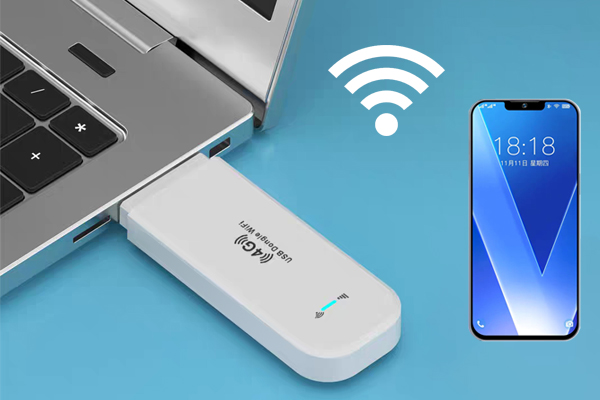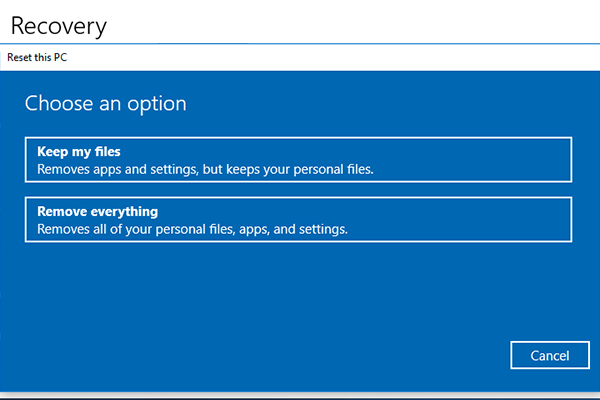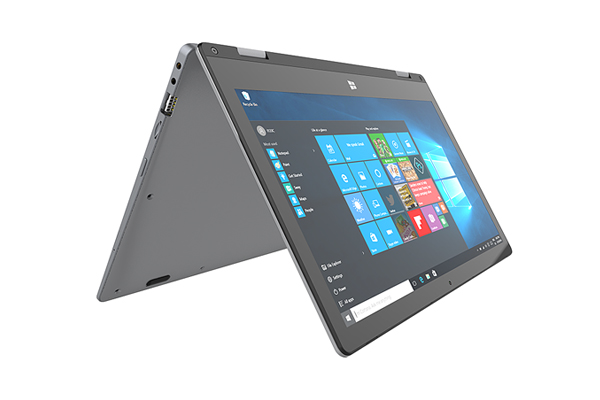- Have any questions?
- +86 19122692420
- info@aiwa-group.com

What is a good processor speed for a laptop?
June 15, 2022
Best AMD Ryzen 5/7 165hz Officeworks Game Laptop 8/16 GB RAM Specials
June 20, 20221.How to recover data from laptop hard drive that won't boot?

You have stored a lot of important data files in your laptop, but what if your laptop suddenly fails to turn on or is damaged? How to get files off a hard drive that won't boot?
Connect or install the old hard drive to a working system as its external hard drive (Windows7/10, Mac, Linux) Access the old hard drive as a desktop computer's hard drive. Although your computer has been unable to start normally, the data in the hard disk will be preserved normally.
Get a SSD enclosure. This is an external system where you can run one computer's hard drive on another via a USB port; in effect, the case will turn your laptop's hard drive into an external hard drive. Different computers use different hard drive models, so be sure to check your laptop's specs before buying. If your laptop has a 2.5 SATA drive, you will need a 2.5 SATA USB enclosure. Unless you have a SATA drive, be sure to buy a laptop-sized disk enclosure; only SATA off-the-shelf enclosures can hold both desktop and laptop hard drives. Note that disk enclosures are not the usual big box stores and are usually bought online.
Borrow a work computer that is compatible with your old computer. If you have a windows, use another windows; if you have an apple, use another mac; etc., make sure it has enough space for the files you want to backup from a broken laptop; alternatively, you can hook an external hard drive The computer running on the drive only uses the computer as the file transfer system. A Linux computer will be able to read files on a Windows computer (not the other way around); unless you know both systems, it's best to use a Windows computer to recover your Windows hard drive.
Mac users can plug a Windows hard drive into a computer that can read (not write) the contents of their hard drive if they don't have a separate driver installed, such as NTFS-3G or Paragon NTFS. But be careful, you can only use Disk Utility to "mount" the hard drive during use. Anything else you do on Disk Utility can delete the content.
Specific steps:
Remove the hard drive from the broken notebook. Turn off the computer, unplug it, and remove the battery. Flip it over and you'll see a variety of laptop docks that can be opened and removed separately. Either look at your laptop model online to see where the hard drive sits or simply look for the most likely candidates: although laptops vary, laptop hard drives tend to be similar in size and shape to a 3.5-inch floppy disk of. Unscrew the hard drive cover and remove the hard drive. Some models will go up, some will slide out, etc.
Remove the connection plate of the disk enclosure and insert the hard disk interface. Look for the connecting plug on one end of the drive to see where it is connected. If you have an IDE hard drive, be aware that there is a detachable adapter on the interface. Just pull the adapter off so the drive is properly connected to the housing's connection plate. Insert the hard drive into the case. Turn it off if necessary; read the accessory manual for more details.
Connect the external hard drive to the work computer with a USB cable. Make sure the computer is turned on. Once the drive is connected, an icon should appear on your desktop (Mac) or a notification should pop up (Windows). The computer may also automatically open the drive for you. If Windows doesn't automatically prompt you for a new external storage unit, turn it on manually by turning on my computer and looking for a new drive. If the hard drive is not recognized at first, try ejecting and inserting it. If the hard drive is unreadable, most likely the hard drive itself (and not the computer's software) has failed. If so, you will need professional help if you want to keep salvaging. Note that this can be very expensive.
Retrieving data from old hard drive, explore and rescue your old files. Transfer them to a work computer or a second external hard drive by copying and pasting, clicking and dragging, and more. If you have a lot of large files (eg songs, movies), be aware that the transfer can take many hours.
When done, close the window to the hard drive. The good news is that the dead computer is still intact, and if you reinstall the OS, it probably works fine.
2.How to charge laptop battery manually?

Laptops are electronic products that are often used in our lives, which have brought a lot of convenience to our work and life, but in some cases they will also fail. Today I'm going to discuss how to manually charge a laptop if the laptop battery won't charge through the DC port. After all, it takes time and energy to go directly to the repair shop for repairs, and there are some faults that we can easily solve by ourselves.
- Replace the power adapter
- Use the USB-C port
- Use a power bank to charge your laptop
- Use an external battery charger
- Use a solar charger
If the power adapter of your laptop is faulty, the line inside is broken or the transformer is broken, the computer cannot be charged. In this case, you can buy a money charger of the same model to charge it, or use a universal charger. The charger charges it.
If the universal charger can charge it, then the problem must be with the original power adapter. It is recommended to repurchase the same power adapter, because the universal adapter may not be very suitable for all computers, and it may fail after a long time.
If your laptop DC port is broken and cannot be charged directly with the power adapter, then you can try charging the laptop with the USB C port.
USB C ports are a common port that all modern laptops have these days, and they are often used as power output. If you want to use it as a power input, you can use a USB data transmission cable. Plug one end of the USB-C cable into the socket and the other end into your laptop, and your laptop will light up in no time.
If your power adapter doesn't match your current environment, or if the power adapter fails, you can use a power bank to charge your laptop. But it should be noted that the voltage required by laptops is usually 12-20V, so ordinary power banks cannot be used. You need to buy a power bank specially designed for laptops. Also, be sure to check the power bank's compatibility with your DC adapter. Most power banks support multiple DC adapters. Therefore, please check the specifications of the device before purchasing.
External battery chargers are not the same as normal power adapter charging methods. The power adapter is to plug one end of the adapter into the DC interface of the notebook computer to charge the notebook computer, and the external battery charger is to charge the battery. This requires you to remove the laptop's battery, plug the battery into an external battery charger, and then plug the external battery charger into an outlet. But this method usually works with removable batteries, and if your laptop battery is an internal battery, then this method is not suitable for you.
One of the great advantages of the solar charging kit is that you can charge your laptop without using a power adapter, you can charge your computer wherever there is sunlight. But there are also inconveniences. The current solar charging kits almost do not support direct Wie laptop charging. You need to take out the laptop battery to charge the battery, and then put it back in to use the computer after it is fully charged. All in all, you'd better buy a spare laptop battery to save you the embarrassment of not being able to use your laptop while charging.
How to properly charge electronic products such as laptops?
- Do not charge for a long time. In theory, keeping the battery level in the middle range (20%-80%) will help prolong battery life, so: don't wait for the battery to die before charging the laptop, when the battery is only about 20 to 30, it needs to be charged . After the laptop is fully charged, it is recommended that you unplug the charger to avoid long-term charging or long-term high-power state to accelerate the aging of the battery, so as to prolong the battery life. And during the charging process, the body will heat up, and long-term charging will increase the risk of overheating and explosion of the battery.
- When charging, choose the original charger. Each brand of Biben has different battery capacity and charging power of chargers. To avoid safety risks, do not mix chargers.
- Remember to pull out the plug after charging. When the charger is plugged into the power socket, the circuit board inside the charger is energized. If the charger is not pulled out for a long time, it will accelerate the aging of the components and materials, and easily cause short circuit or heat, resulting in a fire hazard.
- If the laptop is idle for a long time, it is recommended to turn off the computer and charge it regularly to maintain about 50% of the power. If the battery is not used or charged for a long time, the battery may trigger over-discharge protection, resulting in abnormal charging or failure to charge.
- The temperature is too high or too low will affect the battery life. Try to avoid using or charging your laptop in environments with low, high, or temperature differences. Use in direct sunlight, such as next to a stove.
The above are some conventional methods of manually charging laptops. If you have better methods or suggestions, please leave a message in the comment area to discuss with us.
3.My laptop doesn't have a cd drive what can i do?

Most laptops these days don't have CD drives anymore, so how to play and watch cd dvd on laptop without disk dvd player? After all, some games or videos are only available on discs. The following will give 2 methods, I hope to help you.
- Select the USB external cd drive for laptop pc
- Sharing CD and DVD drives over a local area network in windows computer
- First, use the CD-ROM to open the Computer window (click Start and select Computer).
- Right-click the drive you want to share, point to Sharing, and select Advanced Sharing
- Click the Advanced Sharing button in the Properties window that appears.
- In the next window, enable the Share this folder checkbox. Type a descriptive name for the share, such as "CD Drive", and click the Permissions button.
- Make sure the Everyone group has read access to the drive. If you need extra security - for example, if you are not using your home network After configuring permissions, click OK to save your changes.
- You may want to disable password protected sharing to make it easier for you, assuming you're on a secure home network. To do this, click the Network and Sharing Center link under Password Protection.
- Click on the home page or job title, scroll down, and select Turn off password protected sharing to disable it. Click the Save Changes button when done.
- After clicking the OK button, your drive will be shared on the network. You will see the network path address in the properties window under it.
- On other computers, open Windows Explorer and click Network Options to view your network.
- Browse for the share you created, then right-click on it and select Map Network Drive.
- You can assign a drive letter to the shared optical drive and it will be automatically mapped every time you log in.
- The mapped drive will appear as its own drive letter in the My Computer window. Double-click the drive, or navigate to it in any application to access its contents over the network.
The USB external optical drive is relatively large and inconvenient to carry, but it can read the data in the optical disc without resorting to other settings.
Both computers must be on the same local network to share the optical drive. This requires advanced sharing settings in Windows - there's no easy HomeGroup-style way to do this.
Tip: An icon means it is shared. To stop sharing the drive later, go back to its Advanced Sharing window and uncheck the Share this folder checkbox.
Why don't modern laptop computer have CD DVD drives?
- Reduce the weight of the fuselage
- Aesthetic changes
- CD-ROMs eliminated
- The emergence of U disk
Today's computers are getting thinner and thinner, and the existence of optical drives greatly increases the weight of the computer. Therefore, many computers do not add optical drives, making them thinner and lighter.
Computers are getting better and better, the weight is getting lighter, the notebooks have become much thinner, and there is not so much space left for the optical drive. The cancellation of the optical drive is to cater to the current Zhou Mei.
CD-ROMs are mainly used for CD-ROMs. Now, CD-ROMs are no longer used in various occasions. The storage capacity of CD-ROMs is limited and cannot meet the current storage needs. The storage drawbacks of CD-ROMs led to the emergence of U-disks, so CD-ROMs are gradually not used by many people. Functions that are not used will be replaced, and the cancellation of the optical drive will leave more space for the computer for other components. So the cancellation of the optical drive is due to the advancement of technology, and better U disks have replaced the optical disks.
The emergence of U disk has changed people's storage habits, and can store more content in a limited space, which is far more convenient than CD-ROM. The CD-ROM is also very large, easy to break, and difficult to store. The U-disk saves a lot of trouble. It is small in size and easy to read and store. Such an easy-to-use and affordable thing will of course replace the inconvenient CD-ROM. Now, the optical drive is naturally useless.
Related:
- What is a good processor speed for a laptoplaptop?
- Why is my new laptop so slow?
- How to overclock laptop?
- How to download movies on disney plus on laptop?
- How to build a laptop?
If you want to buy a new laptop, or want to find a strong laptop supplier, then you can go through our product page, or take a look at our article, which has a few products we recommend, along with a guide to choosing a laptop Best 15 Inch I5 Windows 10/11 Green Gaming Laptop Price Philippines 2021
If you have other related questions, you can contact us by email





